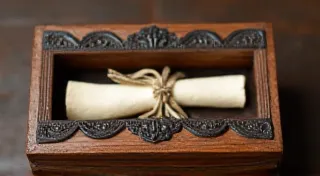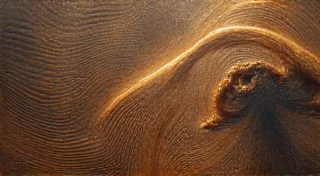Welcome to the World of Wooden Model Ship Building
For centuries, the allure of the sea has captivated humanity. From the grand galleons of old to the sleek clipper ships that crisscrossed the globe, these vessels represent a powerful blend of artistry, engineering, and adventure. Building a wooden model ship isn’t just a craft; it’s a journey—a tangible connection to history, a meditation on precision, and a deeply satisfying creative outlet. This website is dedicated to providing resources, inspiration, and guidance for those embarking on this rewarding endeavor. Whether you're a complete novice or an experienced craftsman, you'll find something to enrich your understanding and passion for model ships and the art of their creation. We're especially dedicated to the reproduction of significant historical ships, vessels that defined eras and shaped the course of maritime history.
The beauty of wooden models lies not only in their finished appearance but also in the process itself. Unlike plastic kits, building a traditional wooden model demands a different kind of patience, problem-solving, and appreciation for natural materials. Each piece of wood tells a story, and understanding those stories – the grain, the character, the history embedded within – is crucial to creating a truly authentic reproduction. "Beyond the Blueprints: A Dialogue with the Wood" (/beyond-blueprints-dialogue-wood) explores this vital connection between builder and material. We're not simply assembling pieces; we're recreating a legacy. Many people are drawn to historical ships because of the stories they carry – tales of daring voyages, epic battles, and the lives of those who sailed them.
The Journey Begins: Understanding the Hull
The heart of any model ship is undeniably the hull. It’s the foundation upon which the entire vessel is built, and its shape dictates the ship’s character and behavior. Before even touching a piece of wood, it's beneficial to understand the underlying principles of hull design. Consider diving into "Beneath the Surface: The Hidden Geometry of a Hull" (/beneath-surface-hidden-geometry) to explore the fascinating mathematics and engineering that shaped the historical ships of yesteryear. Grasping this knowledge will elevate your building experience, allowing you to appreciate the nuances of shape and form.
More Than Just a Craft: A Dialogue with the Wood
Building with wood is a conversation. It’s not a one-way street where you impose your will upon the material. Instead, you must listen to the wood, responding to its natural tendencies and working with it, not against it. The way a piece of wood splits, bends, or responds to a tool provides vital clues about its strength, grain, and potential. As outlined in "Beyond the Blueprints: A Dialogue with the Wood" (/beyond-blueprints-dialogue-wood), this understanding leads to a richer, more rewarding build.
Historical Accuracy and the Shipwright's Legacy
Many are drawn to building model ships because of a desire to recreate a specific moment in maritime history. Reconciling historical documentation with the practical challenges of construction can be tricky, especially when dealing with historical ships for which detailed plans are scarce. "The Cartographer's Ghost: Reconciling History and Hull" (/cartographers-ghost-reconciling-history) explores this fascinating intersection of research and artistry. Furthermore, the "The Whispers of the Rivets: Echoes of the Shipwrights" (/whispers-rivets-echoes-shipwrights) will unveil stories passed down from those who once built these historical ships on a grand scale.
The Narrative in Miniature: Chronicles in Miniature
Each ship carries a story—a tale of voyages undertaken, battles fought, and lives lived. "Chronicles in Miniature: The Stories Held Within the Hull" (/chronicles-miniature-stories-hull) examines how a model ship can become more than just a replica; it can become a vessel of remembrance and a tangible link to the past. When a ship is built in a scale small enough to fit upon a tabletop, it represents more than just dimensions; it is a collection of memories and emotions. Consider the importance of portraying the details that defined significant historical ships – the flags, the armaments, the unique markings.
Finding Perspective and Grace
Understanding the context in which a ship was built – its purpose, its era, its geographic location – is crucial to creating an authentic representation. "The Compass Rose of Perspective: Reinterpreting Maritime History" (/compass-rose-perspective-maritime) encourages a deeper understanding of the historical and cultural forces that shaped naval architecture and the types of historical ships commissioned during those periods. It’s not just about recreating the ship's appearance; it's about understanding its place in the larger tapestry of human endeavor. The journey often begins with "A Horizon in the Workshop: Dreams Born from Timber" (/horizon-workshop-dreams-born-timber).
From Vision to Wood: Translating Dreams
“From Dream to Draft: Transcribing Visions into Wood" (/dream-draft-transcribing-visions) explores the initial stages of the process, from conceptualization to creating detailed plans. Translating that vision into a three-dimensional object is an art form in itself, requiring a unique blend of creativity and technical skill.
The Alchemy of Wood and Facing Imperfection
“More Than Just Nails and Glue: The Alchemy of Wood" (/more-than-nails-glue-alchemy-wood) delves into the techniques and processes that transform raw materials into elegant structures. It’s about understanding the properties of different woods, mastering the tools of the trade, and discovering the magic that happens when wood, skill, and creativity converge. Even seasoned builders experience setbacks. “Shadows on the Keel: Facing Imperfection in the Build" (/shadows-keel-facing-imperfection) provides guidance on navigating these challenges.
The Sailor’s Legacy and Inner Peace
Connecting with our maritime heritage and finding solace in the meticulous process is paramount. "The Sailor’s Legacy: Connecting to Maritime Ancestry" (/sailors-legacy-connecting-ancestry) delves into the historical context, while "The Mariner’s Respite: Finding Solace in the Miniature World" (/mariners-respite-solace-miniature) focuses on the meditative aspects of shipbuilding. Finding stillness in the build is key, as emphasized in "The Silent Navigator: Finding Stillness in the Build" (/silent-navigator-finding-stillness).
Infusing Personality and Remembering the Past
Your ship reflects your vision. "From Splinter to Spirit: Infusing Personality into Your Build" (/splinter-spirit-infusing-personality) provides insights on personalization. Remembering the significance of each piece, as explored in "Timbers of Memory: Echoes in the Grain" (/timbers-of-memory-echoes-in-grain), honors the shipwrights who came before. The profound weight of absence is considered in "The Weight of Absence: Building Ships for Those Lost at Sea" (/weight-absence-building-lost-sea).
Scale, Proportion, and Grace
Achieving elegance in your model relies on careful attention to detail and understanding the principles of design. "The Weight of Scale: Understanding Proportion and Grace" (/weight-scale-understanding-grace) provides guidance on achieving balance and visual appeal.
Ultimately, building a wooden model ship is a journey of discovery, skill development, and connection—to history, to nature, and to oneself.


















